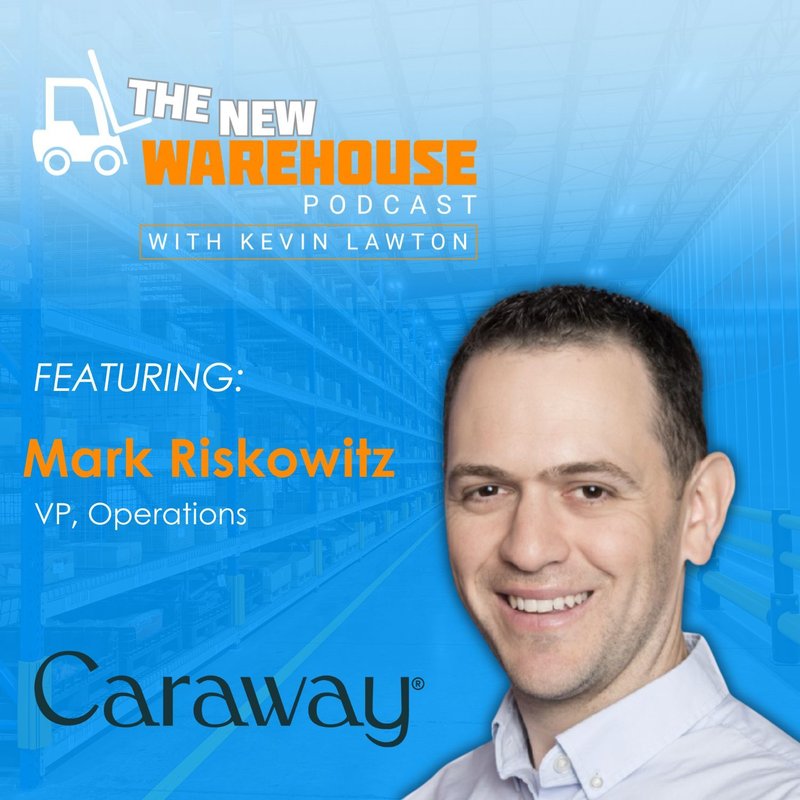
Episode 564: Mastering Omnichannel Logistics with Caraway Home
E-commerce growth has transformed how brands approach logistics, fulfillment, and omnichannel distribution. In this episode of The New Warehouse Podcast, Kevin welcomes Mark Riskowitz, VP of Operations at Caraway Home. Riskowitz shares how Caraway grew from a startup to a major player in premium kitchenware, overcoming logistical challenges.
Building a Scalable Omnichannel Logistics Framework from Day One
When Caraway Home launched in 2019, its founders had a clear vision: create a premium, aesthetically pleasing kitchenware brand that could thrive across multiple sales channels. For Riskowitz, establishing a strong operational foundation was crucial.
“It allowed for a lot of experimentation, a lot of optimization when you didn’t have a lot of baggage to inherit,” he explains. Caraway prioritized omnichannel distribution to ensure its logistics network scaled seamlessly as demand grew.
From day one, the company’s choice to rely on third-party logistics (3PL) proved pivotal. “Self-fulfillment was rather difficult to buy into when the certainty of the business was still something that needed to be proven,” says Riskowitz. Caraway’s 3PL partner was critical in handling growth surges, including the unexpected spike in demand during the pandemic.
Navigating Explosive Growth and Supply Chain Disruptions
Like many e-commerce brands, Caraway Home saw an unprecedented increase in demand during COVID-19. The challenge was meeting order volume and maintaining supply chain efficiency. “COVID almost took the company from year zero, one, two, and three and threw it right into year four, five, and six,” Riskowitz recalls. The rapid acceleration required agility and strategic planning. Stock availability, shipping timelines, and fulfillment capacity became critical focus areas.
Despite these challenges, Caraway maintained intense customer satisfaction by ensuring transparency in delivery expectations. “The conviction for purchase didn’t change. If you had stock or could project some kind of restock date, customers would still commit,” he explains. This ability to manage consumer trust during supply chain disruptions was a key factor in sustaining growth.
What Makes a 3PL Partnership Successful?
With Caraway Home relying exclusively on 3PL fulfillment, Riskowitz emphasizes treating 3PL providers as true partners. “We view the partners we work with as an extension of the business rather than an outsourced contractor performing a task,” he states.
A successful 3PL partnership, according to Riskowitz, comes down to:
- Scalability: The ability to handle growth surges without compromising service levels.
- Communication: Clear and proactive engagement between the brand and the fulfillment partner.
- Alignment on Goals: Ensuring both parties work toward shared operational efficiencies.
For Caraway, this approach has led to a five-year partnership with its 3PL, proving that strong relationships in logistics can directly impact business success.
Key Takeaways
- Omnichannel from the Start: Caraway Home designed its supply chain with omnichannel retail in mind, enabling smooth expansion into new sales channels.
- 3PL as a Strategic Partner: By outsourcing fulfillment from the beginning, the company scaled rapidly while avoiding the complexities of self-fulfillment.
- Agility in Uncertain Times: Navigating COVID-19 required a flexible approach to stock availability and logistics management.
Long-Term Logistics Success: Building strong relationships with 3PL providers fosters reliability and scalability over time.









